The '''no cloning theorem''' is a result of quantum mechanics which forbids the creation of identical copies of an arbitrary unknown quantum state. It was stated by [[William Wootters|Wootters]], [[Wojciech Zurek|Zurek]], and [[Dennis Dieks|Dieks]] in [[1982]], and has profound implications in [[What is Quantum Computation?|quantum computing]] and related fields.
The theorem follows from the fact that all quantum operations must be [[unitary matrix|unitary]] [[linear transformations|linear transformation]]
on the state (and potentially an [[an ancilla|ancilla]]) .
== Proof ==
Suppose the state of a quantum system A is a [[qubit]], which we wish to copy.
The state can be written (see [[bra-ket notation]]) as
:.
The [[complex number|complex]] coefficients ''a'' and ''b'' are unknown to us. In order to make a copy, we take a system B with an identical [[Hilbert space]] and initial state (which must be independent of , of which we have no prior knowledge). The composite system is then described by the [[tensor product]], and its state is
:.
There are only two ways to manipulate the composite system. We could perform an observation, which irreversibly [[Wavefunction collapse|collapses]] the system into some [[eigenstate]] of the [[observable (quantum mechanics)|observable]], corrupting the information contained in the qubit. This is obviously not what we want. Alternatively, we could control the [[Hamiltonian (quantum_mechanics)|Hamiltonian]] of the system, and thus the [[mathematical formulation of quantum mechanics|time evolution operator]] U(Δ''t''), which is [[linear operator|linear]]. We must fix a time interval Δ''t'', again independent of . Then U(Δ''t'') acts as a copier provided
:{|
|
|
|-
|
|
|-
|
|
|}
for all ψ. This must then be true for the basis states as well, so
:
:.
Then the linearity of U(Δ''t'') implies
:{|
|
|
|-
|
|
|-
|
|
|}.
Thus, is generally not equal to , as may be verified by plugging in ''a'' = ''b'' = 2-1/2, so U(Δ''t'') cannot act as a general copier. [[Q.E.D.]]
== Consequences ==
The no cloning theorem prevents us from using classical [[error correction]] techniques on quantum states. For example, we cannot create backup copies of a state in the middle of a [[quantum computer|quantum computation]], and use them to correct subsequent errors. Error correction is vital for practical quantum computing, and for some time this was thought to be a fatal limitation. In [[1995]], [[Peter Shor|Shor]] and [[Andrew Steane|Steane]] revived the prospects of quantum computing by independently devising the first [[quantum error correction|quantum error correcting]] codes, which circumvent the no cloning theorem.
In contrast, the no cloning theorem is a vital ingredient in [[quantum cryptography]], as it forbids eavesdroppers from creating copies of a transmitted quantum cryptographic key.
Fundamentally, the no-cloning theorem protects the [[uncertainty principle]] in [[quantum mechanics]]. If one could clone an ''unknown'' state, then one could make as many copies of it as one wished, and measure each dynamical variable with arbitrary precision, thereby bypassing the uncertainty principle. This is prevented by the non-cloning theorem.
More fundamentally, the no cloning theorem prevents [[superluminal communication]] via [[quantum entanglement]]. Consider the [[EPR paradox|EPR thought experiment]], and suppose quantum states could be cloned. Alice could send bits to Bob in the following way:
If Alice wishes to transmit a "0", she measures the spin of her electron in the '''z''' direction, collapsing Bob's state to either or . Bob creates many copies of his electron's state, and measures the spin of each copy in the '''z''' direction. Bob will know that Alice has transmitted a "0" if all his measurements will produce the same result; otherwise, his measurements will be split evenly between +1/2 and -1/2. This would allow Alice and Bob to communicate across [[space-like]] separations, potentially violating [[causality]].
== Imperfect cloning ==
Even though it is impossible to make perfect copies of an unknown quantum state, it is possible to produce imperfect copies. This can be done by coupling a larger auxiliary system to the system that is to be cloned, and applying a [[unitary matrix|unitary transformation]] to the combined system. If the unitary transformation is chosen correctly, several components of the combined system will evolve into approximate copies of the original system. Imperfect cloning can be used as an eavesdropping attack on quantum cryptography protocols, among other uses in quantum information science.
==See also==
* [[Quantum teleportation]]
* [[Quantum entanglement]]
* [[Quantum information]]
* [[Uncertainty principle]]
* [[Time travel]]
==References==
* Wootters, W.K. and Zurek, W.H.: ''A Single Quantum Cannot be Cloned''. Nature 299 (1982), pp. 802-803
* Dieks, D.: ''Communication by EPR devices''. Physics Letters A, vol. 92(6) (1982), pp. 271-272
* Buzek, V. and Hillery, M.: "Quantum cloning". Physics World 14 (11) (2001), pp. 25-29
{{FromWikipedia}}
[[Category:Quantum Information Theory]]
[[Category:Evolutions and Operations]]
